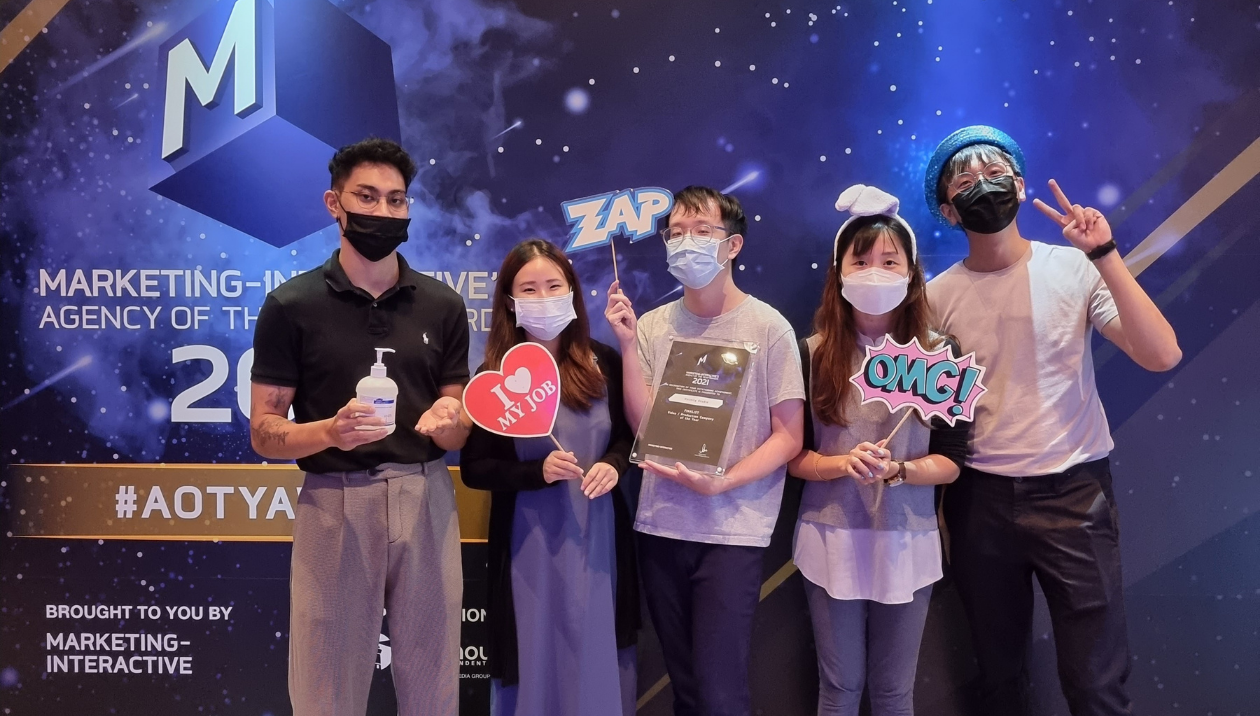
Managing Gen Z creatives: The Vicinity Studio perspective
share on
This post is sponsored by Vicinity Studio.
A cursory look at the Vicinity Studio manpower list reveals a significant number of staff members born after 1995, a trend many creative organisations are experiencing as more and more Gen Zers join the workforce.
And with it comes a work culture unique to Gen Z. They tend not to prefer a fixed structure and are more comfortable in flatter organisational hierarchies. They have a subjective approach to their jobs, not viewing work as right or wrong, but driven by their own personal tastes, values and opinions on creativity.
Other industries such as banking and finance would find trouble executing their recipes with the ingredients that Vicinity Studio has been dealt with in the creative sector. With its manpower make-up, Vicinity Studio has quickly learnt that Gen Z creatives don’t care if you are a founder or a senior art director – they look at a leader’s work and influence.
In the creative industry, the challenge for leadership is to form a motivated, inspired, and high-alignment team for Gen Z creatives. Vicinity Studio takes a three-pronged approach in achieving this.
Create a strong team culture
A strong team culture, especially one of open communication, that aligns with the needs, values and aspirations of its Gen Z members does wonders in getting the best out of them, and significantly improves a team’s productivity and performance. And it has a lot to do with communication and leadership styles.
Today, leaders and managers may find that Gen Z creatives tend to be difficult to understand and to communicate with. But it’s not difficult to create the conditions for them to thrive.
The challenge when creating this strong team culture is in aligning the diverse, subjective inputs from Gen Z creatives into coherent complex results. Beyond that, it is essential to provide valuable feedback, and support team members in their artistic development.
When writing on communication habits in creative teams, culture academic Dagmar Abfalter noted that feedback is only valued when considered sincere and true. It needs to be immediate, personal, and built on trust. That cannot happen without the right infrastructure and attitude from leadership and management. Without these, Gen Z creatives tend to retreat into a defensive mindset when facing work-related problems or challenges.
When such conflicts or situations arise, it will be crucial for team leaders to look at whether a team culture even exists to begin with. They then need to decide what direction to set for it, and align it with their company’s values.
Create a mutual understanding of autonomy and alignment
Managing Gen Z creatives is a lot about striking the right balance. They have their entire careers ahead of them, so it is important to give them opportunities to try new things outside their stipulated job scopes and responsibilities, to express themselves and their opinions. It helps them grow as creative professionals and as individuals. But at the same time, they need to understand their responsibilities to the larger organisation.
Vicinity Studio has had to come to terms with this first-hand.
It had a team (let’s call the team Department C for the purpose of this anecdote) that operates as more of an independent unit – where it crafts media content and oversees pre-production to the delivery itself. The other departments did not trust that Department C’s work was beneficial to the company since it was given full autonomy outside of the company’s workflow.
The team leaders at Vicinity Studio learnt quickly its teams needed to have a mutual understanding of autonomy, and alignment, along with trusting their colleagues to create a collaborative and committed culture. That begins with psychological safety.
Create a circle of psychological safety
The entire conflict (between Department C and the other departments) was a clear sign to Vicinity Studio’s leadership that they lacked an environment of psychological safety. They considered that things might have been different if help was offered instead of negative feedback. There was an urgent need to create an environment for people to speak up and be honest.
Leaders of Gen Z creatives must define the boundaries of psychological safety and promote habits that will help promote a sense of freedom and expression for Gen Z personnel. When they are clear as to what constitutes blameworthy acts, there will be a clearer definition of what are acceptable actions. This, combined with good conflict resolution practices, will help preserve the team’s integrity while maintaining psychological safety.
Consider how Gen Z has been perceived in the past few years: capable of changing the world with their progressive ideas, yet not taken seriously. As more and more of them enter the workforce and contribute to society, they will be taken more and more seriously. And with the right leadership, they will be empowered to truly change the world – for the better, for all of us.
Writer: Kevin Ng, founder and managing director of Vicinity Studio
share on
Free newsletter
Get the daily lowdown on Asia's top marketing stories.
We break down the big and messy topics of the day so you're updated on the most important developments in Asia's marketing development – for free.
subscribe now open in new window
